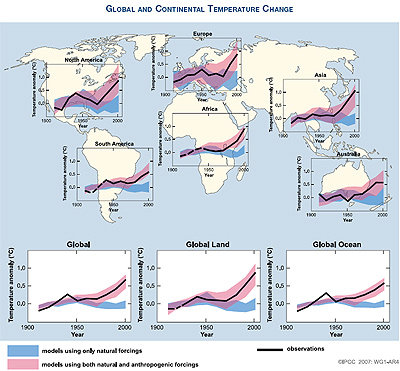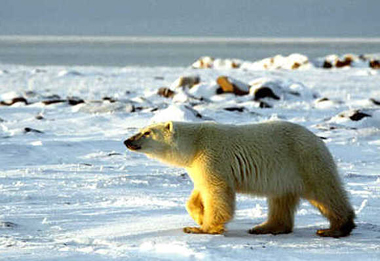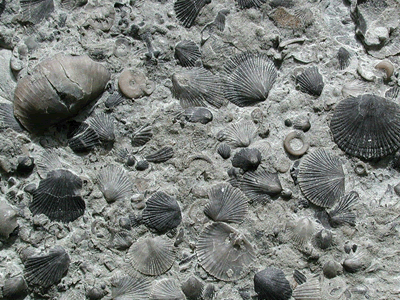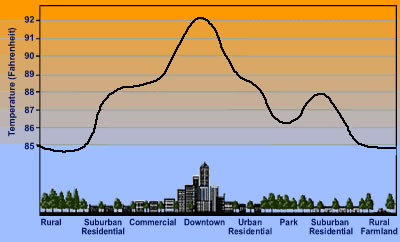Click on image for full size
IPCC 2007: Working Group 1 - AR4
The Intergovernmental Panel on Climate Change
Imagine doing a book report for a school assignment. You read a book and then write a summary describing what it is about. Simple, right?
Now imagine that you are doing that book report as a group project – not with a small group of students, but instead with a group of several hundred climate experts from around the world. And instead of one book, your group is responsible for writing a report about all of the books and articles that describe what we know about Earth’s climate.
That’s the job of the Intergovernmental Panel on Climate Change – the IPCC.
The IPCC is a group of hundreds of experts from more than 100 countries. The IPCC does not do research about climate change. Instead, the group produces reports that explain what we know about climate change. These reports are based on all the books and articles that describe the science of our planet and climate and as such they are like the world’s most extensive book reports.
The reports of the IPCC are used by government officials in countries around the world as they make decisions about how their countries will tackle problems like greenhouse gas emissions and climate change.
The IPCC was formed by the World Meteorological Organization (WMO) and the United Nations Environment Programme (UNEP) in 1988. The WMO and UNEP recognized that there was a need to help people understand how the Earth’s climate system works so that people could make informed decisions about how they would live on the planet. Since our understanding of the Earth’s climate is growing broader each year, there is an ongoing need to keep people informed about the current state of knowledge about Earth’s climate.
In October 2007 the IPCC was awarded the Nobel Peace Prize jointly with Former US Vice President Al Gore for their efforts to build up and share knowledge about climate change.















